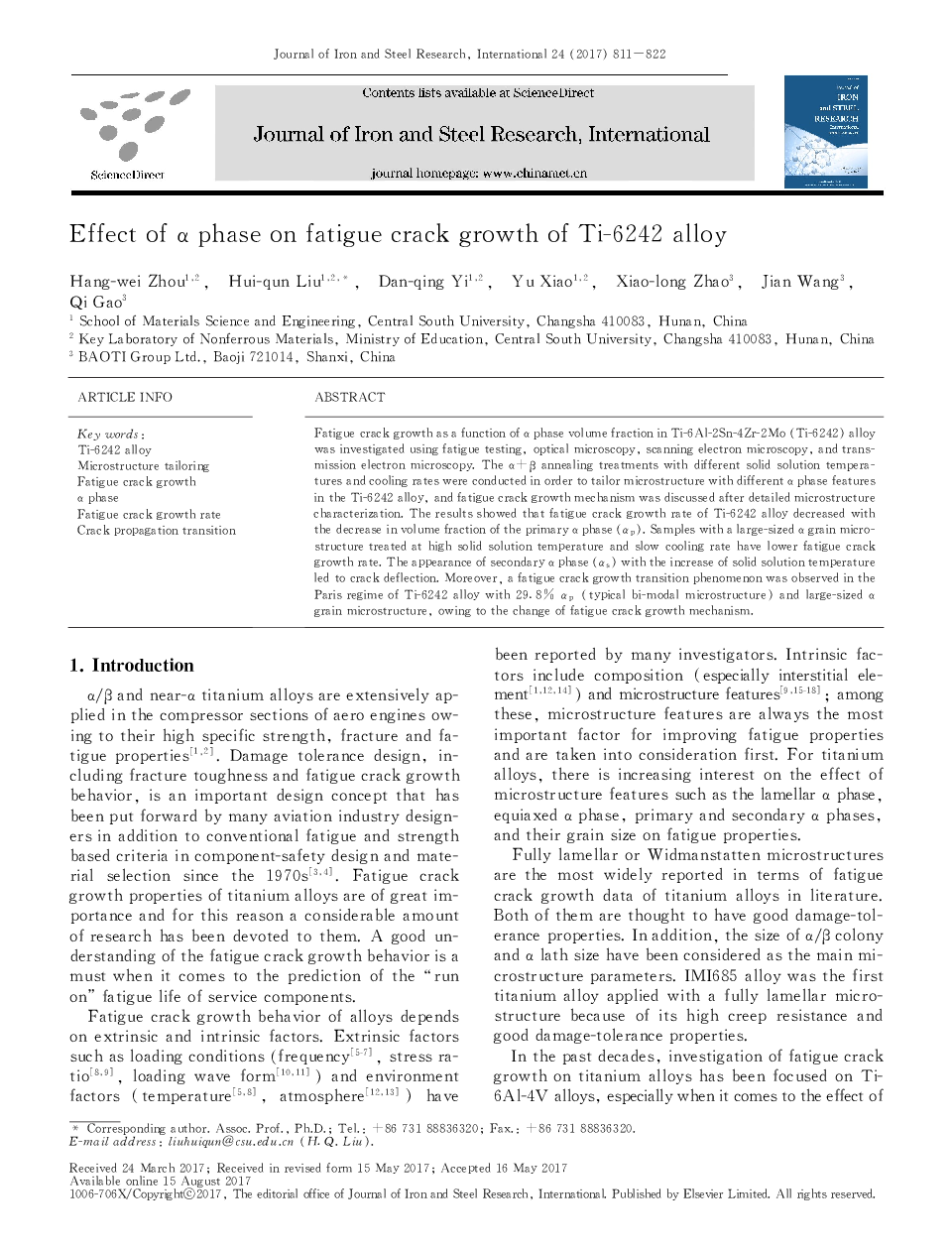| Article ID | Journal | Published Year | Pages | File Type |
|---|---|---|---|---|
| 8004212 | Journal of Iron and Steel Research, International | 2017 | 12 Pages |
Abstract
Fatigue crack growth as a function of a phase volume fraction in Ti-6Al-2Sn-4Zr-2Mo (Ti-6242) alloy was investigated using fatigue testing, optical microscopy, scanning electron microscopy, and transmission electron microscopy. The α+β annealing treatments with different solid solution temperatures and cooling rates were conducted in order to tailor microstructure with different a phase features in the Ti-6242 alloy, and fatigue crack growth mechanism was discussed after detailed microstructure characterization. The results showed that fatigue crack growth rate of Ti-6242 alloy decreased with the decrease in volume fraction of the primary α phase (αp). Samples with a large-sized a grain microstructure treated at high solid solution temperature and slow cooling rate have lower fatigue crack growth rate. The appearance of secondary a phase (αs) with the increase of solid solution temperature led to crack deflection. Moreover, a fatigue crack growth transition phenomenon was observed in the Paris regime of Ti-6242 alloy with 29.8% αp (typical bi-modal microstructure) and large-sized a grain microstructure, owing to the change of fatigue crack growth mechanism.
Related Topics
Physical Sciences and Engineering
Materials Science
Metals and Alloys
Authors
Hang-wei Zhou, Hui-qun Liu, Dan-qing Yi, Yu Xiao, Xiao-long Zhao, Jian Wang, Qi Gao,
